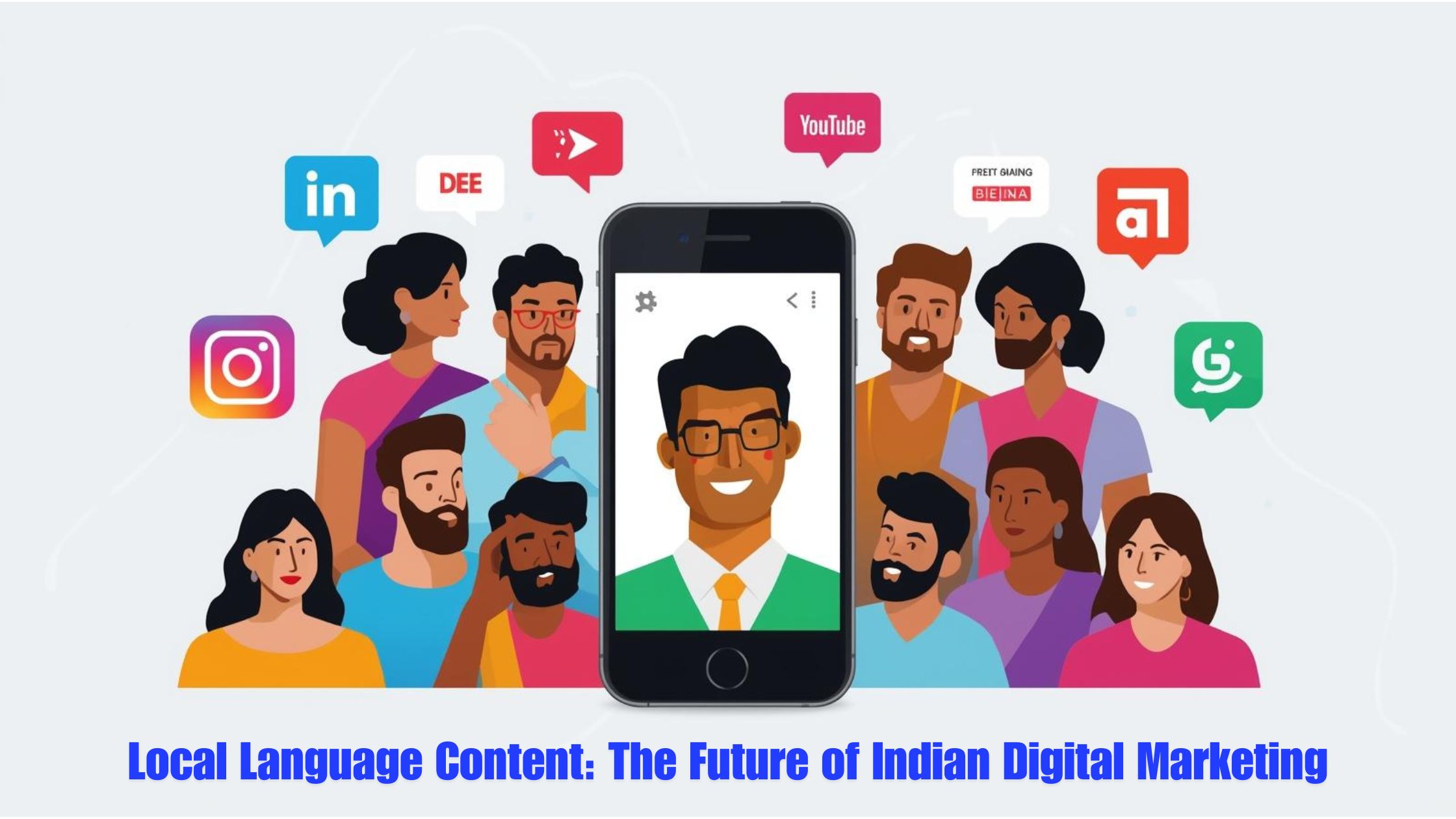In the last decade, India’s digital landscape has undergone a dramatic transformation. With over 800 million internet users and rapidly growing smartphone penetration, the digital ecosystem in India is one of the most dynamic in the world. However, what truly defines the next chapter of this growth story is not just access but language.
As the Indian internet becomes more inclusive, the need for local language content is becoming central to any successful digital marketing strategy. For influencers, brands, and social media users alike, embracing regional languages is no longer optional it’s the future of digital engagement in India.
1. The Rise of the Non-English Internet User
Historically, English dominated digital content in India. However, recent trends have shown a massive shift:
- Over 75% of internet users in India prefer content in their native language.
- According to a Google-KPMG report, Indian language internet users are expected to account for nearly 75% of India’s internet user base.
- Tier 2 and Tier 3 cities are driving the next wave of growth, and these users are primarily non-English speakers.
This clearly indicates that the English-first internet strategy is no longer sufficient to engage the majority of India’s online population.
2. Higher Engagement with Regional Content
For influencers and social media marketers, engagement is king. Local language content consistently outperforms English content on several key engagement metrics:
- More likes, shares, and comments from regional users who feel personally connected to the language and tone.
- Longer watch times for videos in regional languages.
- Increased trust and emotional connection, which drives conversions and brand loyalty.
Platforms like YouTube, Instagram Reels, and ShareChat have seen explosive growth in regional content creators. Even global platforms like Facebook and Twitter now support multiple Indian languages to cater to this demand.
3. Content Democratisation: A Level Playing Field
One of the most exciting outcomes of this shift is the democratisation of content creation. Anyone with a smartphone and a message can now become an influencer or a content creator in their own language.
Regional creators are:
- Reaching millions of followers without needing to know English.
- Getting brand partnerships and collaborations tailored to local audiences.
- Influencing buying decisions within their communities.
This trend is giving rise to a hyper-local influencer economy, where micro-influencers in regional niches are becoming key marketing assets.
4. Regional Advertising: The Untapped Goldmine
Advertisers are waking up to the massive opportunity in regional markets. Here’s why:
- Local language ads see up to 1.5x higher click-through rates (CTR).
- Regional campaigns deliver better ROI at lower cost per impression.
- Emotional resonance of mother tongue advertising leads to higher brand recall.
Brands like Amazon, Swiggy, and Airtel have already started rolling out multi-language campaigns across states like Tamil Nadu, West Bengal, and Uttar Pradesh. These campaigns are not just translated—they are culturally adapted to local nuances, which makes them more relatable and effective.
5. The Tech Shift: Tools Are Catching Up
Earlier, one of the biggest challenges was the lack of good tools for creating and managing content in local languages. Today, this is rapidly changing:
- AI-driven translation tools and Natural Language Processing (NLP) now support Indic languages like Hindi, Tamil, Bengali, and Marathi.
- Platforms like Google, Meta, and Canva offer built-in regional language support for ads and content design.
- Voice-to-text and regional language keyboards have made it easier for creators to produce content on the go.
The barrier to entry for local language content has never been lower—and it’s opening up vast possibilities for social media users and influencers.
6. Influencer Marketing in Vernacular Spaces
Influencer marketing is shifting from macro to micro and nano influencers, particularly in vernacular spaces. Why?
- Micro-influencers in regional languages have more targeted audiences.
- They are seen as authentic and trustworthy voices in their communities.
- Brands prefer local influencers to tap into niche markets and build loyalty.
For example, a beauty influencer speaking Marathi in Pune or a food vlogger in Telugu from Hyderabad has more sway over their followers than a national-level English influencer for that specific audience.
7. The Cultural Connection: More Than Just Translation
Local language marketing is not about simply translating English content. It’s about localisation—understanding the culture, humour, festivals, values, and daily realities of different regions.
Successful campaigns go beyond language:
- They use local slang, idioms, and pop culture references.
- They align with regional festivals and events.
- They reflect the aspirations and lifestyles of local audiences.
This depth of cultural alignment leads to deeper emotional impact and more organic sharing across social media.
8. What This Means for You
Whether you’re an influencer, a brand, a small business, or a content creator, here’s what you should be doing:
- Start creating content in at least one regional language relevant to your audience.
- Collaborate with local language creators to grow your reach.
- Use data-driven insights to understand which regions and languages your audience prefers.
- Invest in localisation tools and partners who understand regional nuances.
Conclusion: The Future Is Regional—and It’s Already Here
India’s digital future is multilingual, multicultural, and deeply regional. As connectivity spreads and millions more come online, the dominance of local languages will only increase. Those who adapt to this reality today will be the ones who lead tomorrow.
In a diverse country like India, language is not just a medium—it’s an identity. Brands and influencers who respect and embrace this will not only reach more people but also build stronger, more meaningful relationships with their audiences.
The future of Indian digital marketing isn’t coming—it’s already speaking in many tongues. Are you listening ?

